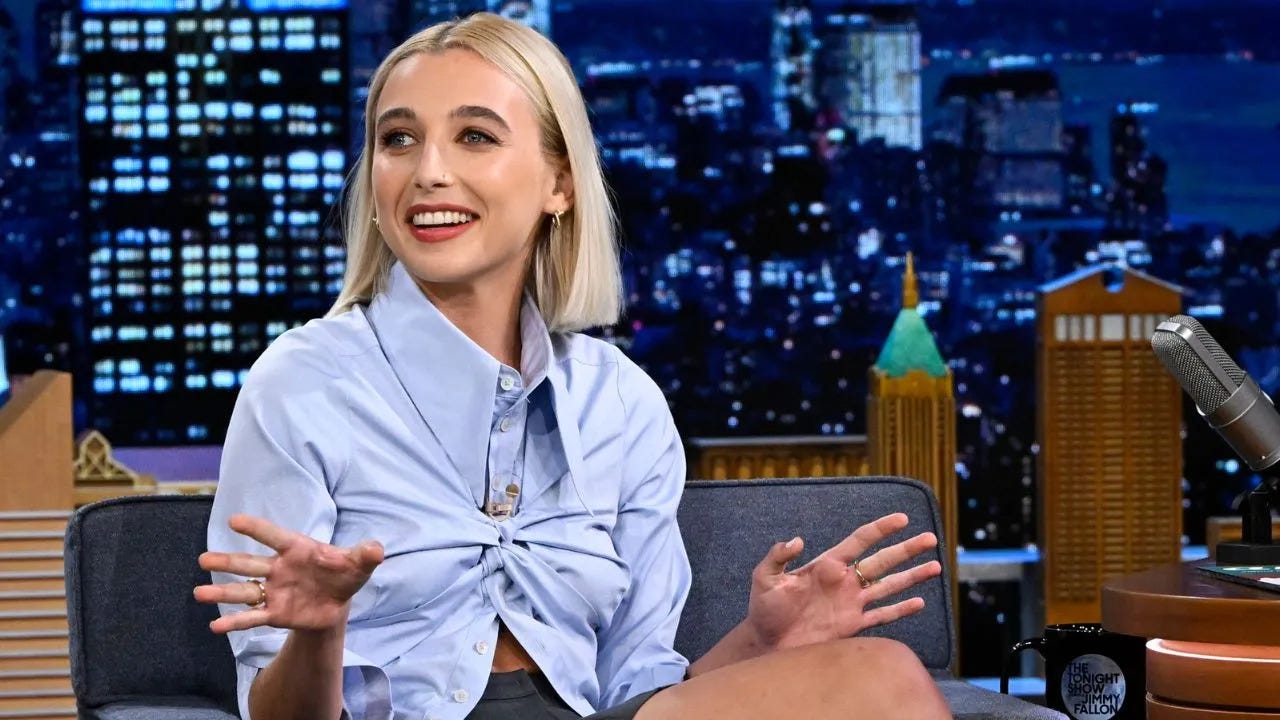“Making Matilda Djerf a Household Name” by Elizabeth Paton was published in The New York Times on August 18, 2022. The article details the rise of Matilda Djerf, a Swedish social media influencer and founder of the clothing brand Djerf Avenue. Through her popular online presence, Djerf has cemented a signature style that many have been influenced to replicate, contributing her own fair share to the “cottagecore,” “clean girl,” and “coastal grandma” aesthetics. Matilda’s personal look and clothing brand feature dreamy parades of soft pastel sheets, berries and baked goods, casual-fitting basics, and lots of effortlessly blown-out blonde hair.
The content of Paton’s article was fairly profile-typical - a neutral-seeming account of Djerf’s rise to success. However, across the now-closed comments section, there was a divide in opinion on the article, largely regarding the Times covering influencers in general.
Some commenters were critical of influencer culture, deeming it a vapid profession that encourages young people to be blind followers rather than conceive their own signature style and goals. Other commenters voiced that paying attention to cultural influence is important, as its effects ripple out into other causes. Others suggested that influencing is inevitable, and thus, influencers should be promoting causes more meaningful than fashion.
Some broadly asserted that there’s never been a time when people haven’t been influenced.
Spokespeople aren’t a new marketing phenomenon. Whether it’s someone speaking on behalf of a governmental agency or a celebrity endorsing a brand, the public is well-acquainted with people standing in front of cameras and talking about things. At one point, it may have been harder to see past the scripted, media-trained nature of traditional spokespeople. Perhaps, viewers believed everything that was delivered to them in White House press briefings and that Beyoncé really did drink Pepsi as much as she did in commercials.
Over time, it seems like a staleness has grown with the routine “celebrity-holds-product-and-talks-about-how-much-they-use-it” song and dance. When Kendall Jenner was announced as the new face of Proactiv in 2019, audiences were unamused - and even somewhat upset - that the multi-millionaire model was trying to convince them she uses a mail-order subscription service as skincare. Perhaps this reaction is a product of greater media literacy or non-celebrities having a greater understanding of the lives of the rich and famous through reality shows and social media. Jenner can’t just flash her designer life on Instagram and then convince audiences she cured her acne with a $19.95 product set. It’s going to take some gymnastics more complex than that to leverage the power of celebrities to sell products.
Enter: influencers.
Social media influencers are individuals with large online followings who are often paid by brands to promote products or services in their posted photos and videos. Influencers typically gain their mass followings through producing “content” that pertains to their unique appearance, personality, or talents.
Importantly, social media influencers are most often regular, non-celebrities who gained a following from the ground up. There is a sense of normalcy about them that makes them more reachable than pop stars, actors, and models. Many begin by posting photos and videos that are humbly produced, often simply captured on a phone camera. Since their content is often entirely self-made - or at least often appears that way - their photos and videos feel raw, which can feel like a treasure to media consumers in a sea of Hollywood-borne artificiality.
Watching influencers, particularly lifestyle “vloggers” who post humdrum snippets of their daily routines, likens the simple pleasures of running an errand or having a lazy Sunday with a friend or sibling. This appeal is part of what made influencers like Emma Chamberlain blow up. Along with her quirky humor, watching Emma grab iced almond milk lattes around San Francisco, browse thrift stores, and attempt to cook meals was mundane enough to feel “real” but charming enough to keep viewers hooked.
Thus, enlisting influencers to sell products felt like a natural fit. It wasn’t an untouchable figure like Lebron James or Kim Kardashian trying to sell you a meal subscription service, but rather a shabby chic teen or 20-something who seems like they would use the service itself.
Incidentally, the root cause of issues people are having with influencing and social media at large appears the same: authenticity. Particularly when it comes to brand sponsorships.
When Instagram posts feel utterly composed, they lose their appeal. When YouTube videos have titles that un-relate to their content, they don’t feel authentic. When every caption contains “#ad,” content creators - once considered somewhat of artists or friends to viewers - get slapped with the label “sell-out.” And even when the videos attempt to nonchalantly slip into and out of mentioning their sponsorships, it can leave viewers feeling a bit bamboozled, like the creator sought to have them get through the video without catching the advertisement.
What also doesn’t help is the fact that these once-accessible influencers are now becoming celebrities of their own. Emma Chamberlain has traded her Doc Martens for stilettos as a now-regular on the Met Gala red carpet, a guest on The Tonight Show, and a common sponsee of Louis Vuitton. It’s not that her videos aren’t still entertaining and her photos aren’t still enticing. They just seem to occupy a different category in pop culture now.
It seems we’ve come full circle. The once-in-touch now feel out of touch.
No matter what, influencing requires a level of deception. Most influencers wouldn’t actually talk about products and services with the ferocity they do if they weren’t getting compensated. And compensation is what they need to keep their online careers afloat. However, the selling strategy can float into vapid territory when it’s clear the figure isn’t standing behind the product they’re pushing. Or if they’re implying that using the product or service will make followers look more like themselves or have the type of life they have. Which often feels like the case, even if it’s not intentional.
“Lifestyle” influencers, in particular, aren’t just influencing the purchasing power of followers, they’re also influencing their lifestyle choices. Followers absorb the details of their purported “daily routines” - their Starbucks orders, workout routines, and current TV show obsessions - and if they like what they see, they replicate it either subconsciously or with intentional vigor. What influencers choose to endorse can have tangible consequences for followers’ lives - whether it’s setting expectations about how a skincare product will affect their skin or co-signing an unethical fast fashion company.
Influencer marketing was - and in many capacities, still is - undoubtedly a way to circumvent the phoniness of traditional testimonials. But if the cycle of normal Internet user, to mass following, to A-list celebrity continues, authenticity will no longer be a strength of the strategy.
It’ll be interesting to see what form sponsored influencer content will come to take if and when viewers get bored of or feel deceived by the overt and casual product mentions. As a viewer myself, nowadays, I often prefer viewing sponsored YouTube videos that have a clear ad section, in which the video cuts to a clip of the creator discussing the video’s sponsorship, like a mini television commercial. Clearing the air, letting it out in the open like a magician revealing her tricks. I have to make money off this content that you enjoy to keep producing it. So please, listen to a word from the sponsor.
Part of me also wonders if this ad-laden content is truly our newest and most innovative form of Internet entertainment. “Day in My Life” YouTube vlogs dominated by sponsorships, sandwiched between two non-skippable ads at the beginning and end of the video. Instagram feeds full of perfectly arranged products. Like we’re all choosing to flip through a magazine of ads instead of the actual “lifestyle” content itself.
But hey, I guess that’s what Vogue is. A magazine full of ads.
Maybe our “lifestyle content” is and always has been kind of the same thing: light on the lifestyle and heavy on the facade. Perhaps a new kind of authenticity is the way out, not a faux blending of ad, content, and life but a sense of honesty about the necessity of advertising for creator support. Oddly enough, maybe a well-revised revisit to original testimonials is what’s next.
Until then, let’s hope not too many media consumers are led astray. Amid Proactiv collaborations and the like.







